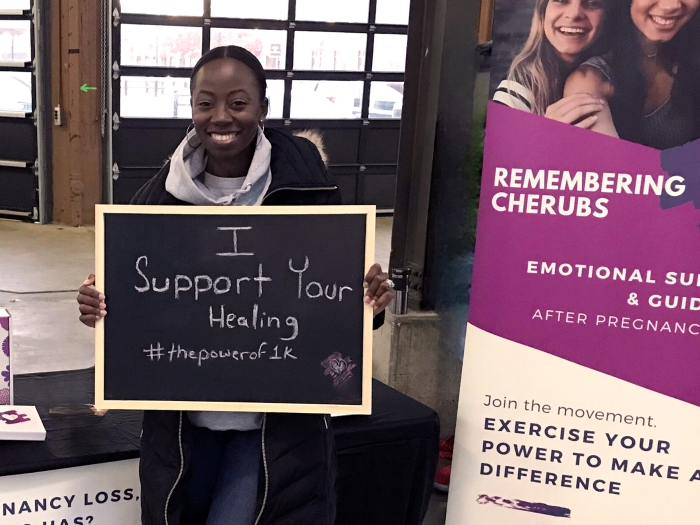For the first time in almost a century, experts release new pregnancy care recommendations that focus on tailoring care to individual patients.
5:00 PM
Author |

For nearly a century, being pregnant usually meant seeing a doctor at least a dozen times before the baby was born.
But after COVID hit and office visits were limited due to exposure risks in 2020, that practice shifted out of necessity – and now, some of those changes may be here to stay.
Michigan Medicine's redesign of prenatal care delivery during the pandemic, which included a flexible approach involving fewer in-person visits for uncomplicated pregnancies and use of telemedicine, may serve as a national model moving forward, according to newly released guidelines in Obstetrics & Gynecology published by the American College of Obstetricians and Gynecologists.
"Prenatal care delivery hasn't changed since World War II, and it doesn't always line up with what many patients both want and need during their pregnancy journey," said senior author Alex Peahl, M.D., MS.c., an obstetrician-gynecologist at University of Michigan Health Von Voigtlander Women's Hospital and head of the Michigan Plan for Appropriate, Tailored Healthcare in Pregnancy, also known as MiPATH, that guided the new recommendations.
"The COVID era has taught us that for many of our pregnant patients, we can offer a more flexible approach that maintains high-quality care for moms and their babies."
A uniform 12–14 in-person visit recommendation for all pregnancies has remained unchanged since 1930. Although many prenatal services, such as vaccinations and imaging, are evidence-based, Peahl said, the field lacked robust data on how to provide these services.
The new guidelines, which stem from a collaboration between ACOG and the University of Michigan through MiPATH, recommend individualizing care, incorporating telemedicine, and considering both medical conditions and social and structural determinants that may impact outcomes in routine care delivery.
Nineteen clinicians and researchers who represented expertise across maternity care, pediatrics, telemedicine, and health equity joined a national panel to consider the new recommendations.
"Maternal and fetal experts from across the country recognized that prenatal care guidelines were long overdue for reconsideration," Peahl said.
"We came together to revisit several aspects of prenatal care delivery, including tailored care based on medical conditions and social and structural determinants of health. Alternative approaches to prenatal care during the COVID-19 pandemic helped us develop recommendations focused on 'right sizing' prenatal care for each individual."
For those with uncomplicated pregnancies, this could mean choosing fewer, more widely spaced prenatal visits (down from 12-14 to eight to 10), which is more in line with peer countries with better maternity outcomes than the United States, Peahl said. These visits would be supplemented with home monitoring devices and telemedicine.
"These guidelines will help maternity care providers to match individuals' needs to services delivered," Peahl said.
Tailoring options for prenatal care delivery
For some patients, a more frequent prenatal visit schedule and more intense monitoring is still appropriate, guidelines state. This includes pregnant individuals with chronic hypertension, preexisting diabetes, or those with a history of pregnancy-related complications.
Peahl noted that the pandemic also reinforced the significant negative effects of adverse social and structural determinants of health impacting health care access and outcomes, particularly for pregnant people. These individuals may need more frequent contact with support services (e.g. social work, group support) but not necessarily prenatal visits, to address such concerns as housing insecurity, inadequate health care coverage.
The COVID era has taught us that for many of our pregnant patients, we can offer a more flexible approach that maintains high-quality care for moms and their babies.Alex Peahl, M.D., MS.c.
MiPATH provides more concrete guidance on when to screen for such determinants of health and how findings may influence other aspects of prenatal care delivery.
"We recognize the significant influence of nonmedical conditions on maternity care access and outcomes," she said.
"Recommendations include an early risk assessment of medical and obstetric risk factors, as well as social and structural determinants of health to help individuals get connected to needed services as early as possible."
In collecting data backing new guidelines, research teams also reviewed studies involving more than 140,000 participants that found limited evidence supporting many components of standard prenatal care delivery, including visit frequency and routine pregnancy monitoring.
They didn't find any differences in maternal and neonatal outcomes among patients without medical conditions who had reduced visits in their analysis. For patients at risk of preterm birth, a higher number of visits also wasn't consistently associated with improved outcomes.
Authors also found high-quality evidence for the accuracy and feasibility of home monitoring of blood pressure and weight in patients with medical conditions, while telemedicine was a successful strategy to consult with individuals with medical conditions.
Phone and video consultations resulted in improved outcomes for patients with depression, diabetes, and hypertension. But the impact of such consults was less consistent among patients with obesity and those at risk of preterm birth. Studies on the effects of virtual care in average-risk populations are limited.
The next step, Peahl said, is to collect additional input from key stakeholders, including patients, professional societies, public health representatives, and payers.
Additionally, an Agency for Healthcare Research and Quality systematic review will help capture additional supporting evidence for key aspects of prenatal care delivery, including new evidence available after the COVID-19 pandemic.
"The data our teams collected and analyzed provide an important foundation for redesigning more flexible, high-value, evidence-based prenatal care delivery plans and strategizing ways to fill key gaps in care," Peahl said.
"Through these efforts we are confident that prenatal care can be redesigned to be more effective, efficient, and equitable for pregnant individuals nationwide."

Explore a variety of healthcare news & stories by visiting the Health Lab home page for more articles.

Department of Communication at Michigan Medicine
Want top health & research news weekly? Sign up for Health Lab’s newsletters today!





